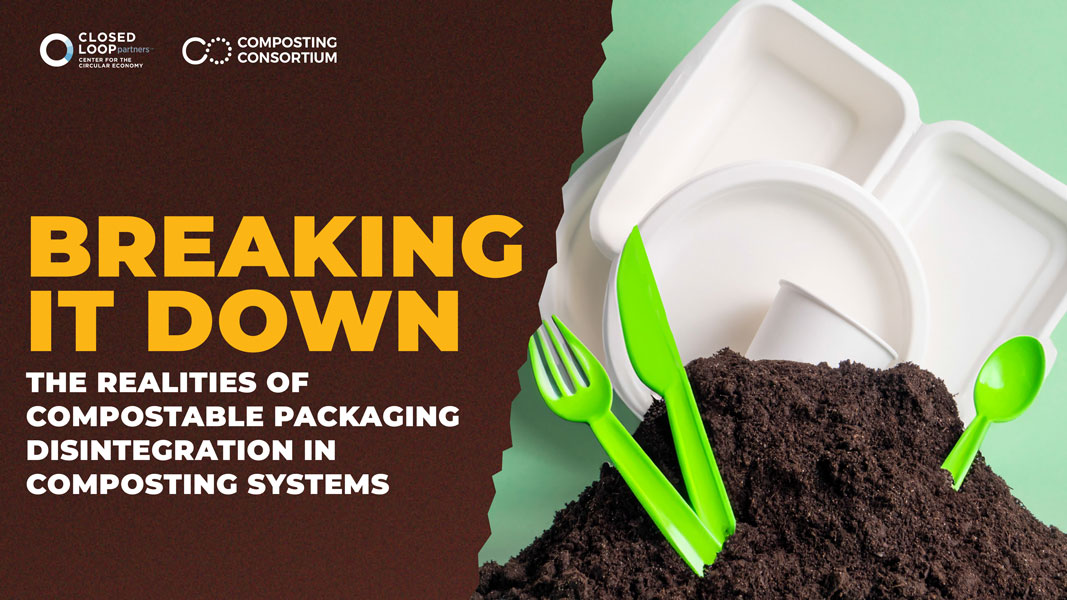Top: Image courtesy Closed Loop Partners
How well does certified, food-contact compostable packaging actually break down in real-world composting facilities? A new report, Breaking It Down: The Realities of Compostable Packaging Disintegration in Composting Systems, offers findings from an 18-month study — the largest known field test of certified, food-contact compostable packaging conducted in North America — revealing the realities of compostable plastic and fiber disintegration in diverse in-field composting conditions. The research study was conducted by the Composting Consortium, an industry collaboration led by the Center for the Circular Economy at Closed Loop Partners. The study tested over 23,000 units of certified food-contact compostable packaging within large-scale industrial composting environments. This encompassed 31 types of fiber packaging and products and compostable plastic packaging and products — such as PLA and PHA — across 10 diverse composting facilities across the U.S.
Collected data shows that overall, compostable packaging breaks down successfully at composting facilities that meet reasonable operational parameters (e.g., compost pile temperatures, moisture, oxygen, pH, etc., defined in The Composting Handbook). While the Consortium’s study did not assess disintegration with the intention to “pass” or “fail” any specific compostable packaging or product, notably, the average compostable plastic and fiber packaging in-field performance in this study met disintegration thresholds used by industry groups. Report takeaways include:
- Compostable plastic packaging and products broke down successfully across five composting methods (windrow, aerated static pile (ASP), covered ASP, extended ASP and in-vessel), and all 10 facilities’ varying processing timeframes and operating conditions, achieving 98% disintegration on average by surface area, which exceeds industry thresholds to achieve 90% or higher disintegration.
- Compostable fiber packaging and products achieved 83% disintegration on average by surface area, meeting industry thresholds to achieve 80% or higher disintegration. Findings showed that certain operating conditions, like turning, agitation and consistent moisture levels above 50%, support increased disintegration of fiber packaging and products.
- All compostable products in the Composting Consortium’s Disintegration Study had notably higher disintegration under the dose method (placed directly into the compost pile) compared to the mesh bag method (contained in the bag). This suggests that either the mesh bag method may result in a conservative disintegration result and/or the dose method may result in an overestimate of packaging disintegration.
A more detailed article on Breaking It Down: The Realities of Compostable Packaging Disintegration in Composting Systems will be published in an upcoming edition of BioCycle CONNECT.














